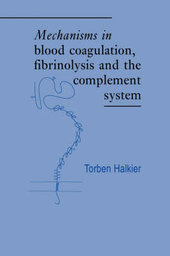
|
Mechanisms in Blood Coagulation, Fibrinolysis and the Complement System
Paperback / softback
Main Details
| Title |
Mechanisms in Blood Coagulation, Fibrinolysis and the Complement System
|
| Authors and Contributors |
By (author) Torben Halkier
|
|
Translated by Paul Woolley
|
| Physical Properties |
| Format:Paperback / softback | | Pages:484 | | Dimensions(mm): Height 234,Width 156 |
|
| Category/Genre | Physiology
Animal physiology |
|---|
| ISBN/Barcode |
9780521071833
|
| Classifications | Dewey:612.115 |
|---|
| Audience | | Professional & Vocational | |
|---|
| Illustrations |
13 Tables, unspecified; 223 Line drawings, unspecified
|
|
Publishing Details |
| Publisher |
Cambridge University Press
|
| Imprint |
Cambridge University Press
|
| Publication Date |
14 August 2008 |
| Publication Country |
United Kingdom
|
Description
This book provides a comprehensive account of the proteins involved in blood coagulation, fibrinolysis and the complement system. A major section of the book is devoted to each of these three systems, with separate chapters dealing in detail with structural aspects and different functional processes. Topics covered in the blood coagulation section include the activation of factors IX and X and prothrombin, and the formation and stabilisation of fibrin. The fibrinolysis section includes the activation of plasminogen, the degradation of fibrin and the regulation of fibrinolysis. The complement system itself is covered in chapters dealing with classical activation, alternative activation, the lytic complex and the regulatory processes involved. In addition, one section deals with special topics, including the kinin system, signal peptides, haemostasis, and the evolution of protein structure. This volume will be of use to researchers and advanced students in the fields of haematology, immunology and clinical chemistry.
Reviews"...an excellent survey of a very complex subject." General Pharmacology "...recommended for researchers and graduate or advanced undergraduate students in molecular biology and biochemistry..." Robert W. Colman, American Journal of Physiology
|